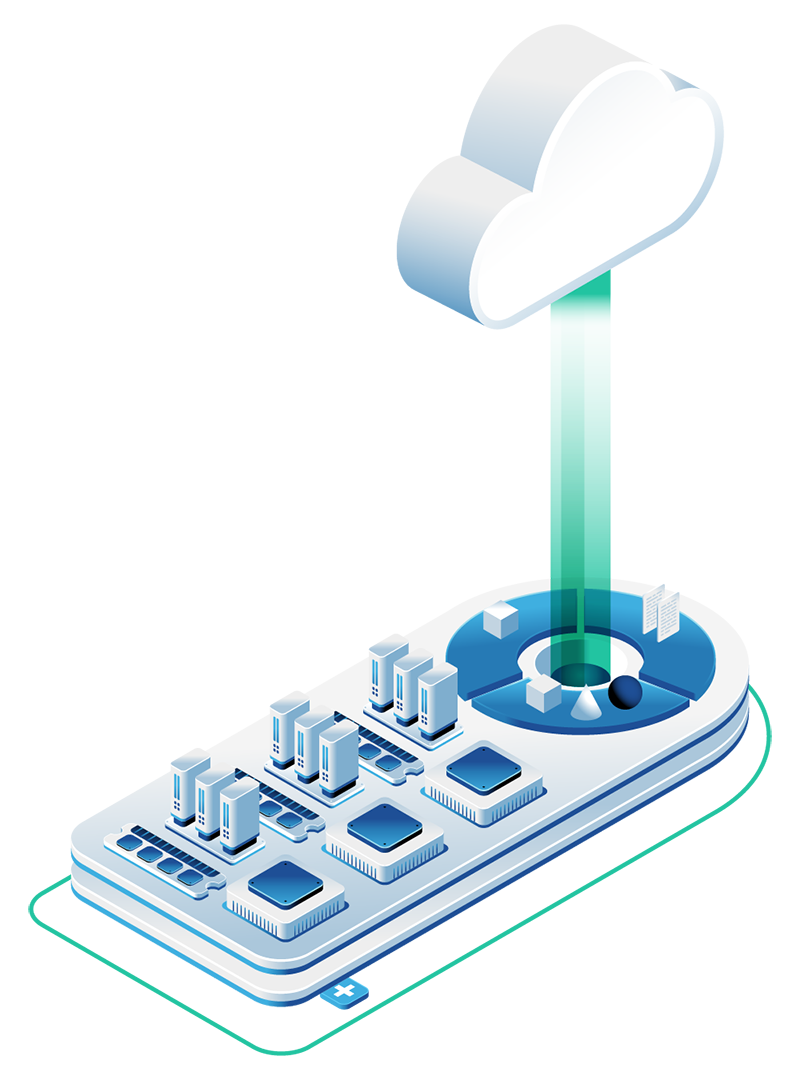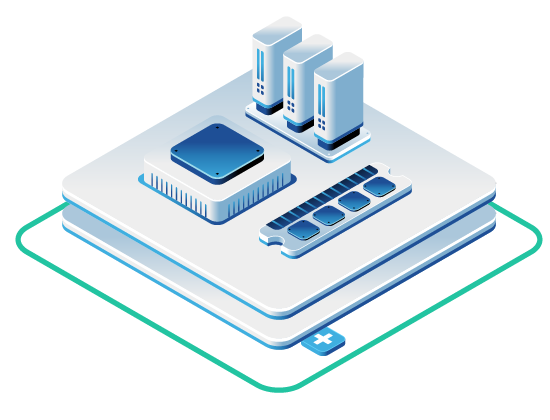Compare OpenMetal and Red Hat’s Cloud Infrastructure Solutions With OpenStack
Selecting a cloud infrastructure solution can be a complex decision. There are many factors to consider like cost, performance, hardware specifications, and support.
This comparison guide will break down the OpenStack-related offerings of OpenMetal vs Red Hat to help you determine which provider is the best fit for your specific needs and budget. Both OpenMetal and Red Hat offer powerful solutions, but they cater to different requirements and deployment strategies. OpenMetal provides a hosted private cloud built directly on OpenStack, while Red Hat integrates OpenStack capabilities within its broader OpenShift Container Platform.
We’ll look at key features, pricing, and technical details to help you make an informed decision. This comparison specifically focuses on OpenMetal’s Hosted Private Cloud product and Red Hat’s OpenStack Services on OpenShift platform (formerly Red Hat OpenStack).

OpenMetal and Red Hat are both capable and trusted cloud service providers, with differing approaches and use cases for their OpenStack-related platforms.
 OpenMetal specializes in providing hosted private cloud solutions, built upon the open source platforms OpenStack and Ceph. OpenMetal offers users a fully dedicated and highly customizable cloud environment. This approach aims to deliver the benefits of a private cloud with the operational ease often associated with public clouds.
OpenMetal specializes in providing hosted private cloud solutions, built upon the open source platforms OpenStack and Ceph. OpenMetal offers users a fully dedicated and highly customizable cloud environment. This approach aims to deliver the benefits of a private cloud with the operational ease often associated with public clouds.
With this guide, we hope to provide a neutral overview of OpenMetal Hosted Private Cloud and Red Hat OpenStack Services on OpenShift to help technology buyers and executives determine which platform best suits their specific Infrastructure-as-a-Service (IaaS) goals.
OpenMetal vs Red Hat Feature Overview Comparison
Red Hat summary: “Red Hat® OpenStack Services on OpenShift® is designed to support your current and future workloads. With the integration of Kubernetes, Red Hat OpenStack Services on OpenShift helps you scale faster and benefit from greater flexibility across the hybrid cloud. As you modernize your application and service offerings, we’ll grow with you, speeding up the development and deployment of both virtualized and containerized applications.”
OpenMetal summary: OpenMetal’s Hosted Private Cloud starts with a cluster of three hyperconverged dedicated servers built on OpenStack and Ceph for maximum control and flexibility with no license costs. Their proprietary automation technology allows users to launch a production-ready, dedicated OpenStack-powered private cloud in under 60 seconds. OpenMetal’s cloud system and Central management platform provides your team with complete control to deploy and manage hardware and fully custom virtual machines, networks, firewalls, storage, and backup services remotely, minimizing your operational cloud costs.
| OpenMetal | Red Hat | |
|---|---|---|
| Core Product | Hosted private cloud (IaaS) | Application platform (PaaS) with integrated IaaS capabilities |
| Underlying Technology | OpenStack and Ceph | Kubernetes (OpenShift) with integrated OpenStack services |
| Primary Focus | Providing dedicated OpenStack IaaS on bare metal | Running containerized and virtualized applications |
| Deployment Model | Hosted service on dedicated bare metal hardware provided and managed by OpenMetal | Software platform deployed on customer’s chosen infrastructure (on-prem, cloud) |
| Hardware | Included; dedicated servers provided; customers may not bring their own hardware | Bring your own hardware (BYOH) or use cloud provider’s infrastructure |
| Management | Full root access to hardware/OpenStack; OpenMetal manages hardware level; fully managed option available | Via OpenShift console/API; customer manages underlying infra (unless using managed OpenShift) |
| VM Support | Native OpenStack virtual machines | Integrated via OpenShift virtualization |
| Container Support | Possible via VMs (e.g., running Kubernetes on OpenStack VMs) | Native Kubernetes via OpenShift Container Platform |
| Pricing Model | Hardware-based; fixed costs; hourly, monthly, and up to 5-year agreement term options | Subscription-based licensing |
| Time to Deploy New Resources | 45 seconds for available, pre-warmed hardware | Depends on infrastructure setup and configuration time |
| Included Egress | Yes, with defined limits and overage costs | Depends on underlying infrastructure provider |
| Support Options | Documentation, email, chat, help desk/ticket, dedicated Slack channel (all tiers) | Documentation/knowledgebase, customer portal, helpdesk/ticket, live chat, phone, remote support session |
| Support Levels | Hardware management, as-needed support only (Included) Assisted management (Available with 1-5 year agreement, $800 base fee + per box fee) | 4 years of Production support and the option to purchase extended lifecycle support (ELS) for the final year. |
| Target Audience | Users needing dedicated, easy-to-deploy OpenStack IaaS; public cloud alternative seekers | Enterprises needing unified VM/container management; app modernization; hybrid cloud strategies |
^All information may be subject to change because of pricing or service adjustments and/or unique customer resources. Information obtained April 2025.
OpenMetal Hosted Private Cloud
- Hosted IaaS Focus: OpenMetal specializes in providing OpenStack private clouds as a hosted service. You get dedicated bare metal servers running OpenStack and Ceph, managed up to the hypervisor level by OpenMetal.
- Simplicity and Speed: Clouds can be deployed very quickly (often in minutes) using pre-configured hardware setups (“Cloud Cores”). This simplifies getting a private OpenStack environment running without deep hardware or deployment expertise.
- Control and Transparency: Users get full root access to their environment, offering full control. Pricing is based on the underlying hardware, offering predictable, fixed costs.
- Technology Stack: Built purely on widely adopted open-source projects: OpenStack for cloud orchestration and Ceph for storage. It is RefStack-validated for OpenStack compatibility.
- Use Cases: Ideal for organizations wanting a straightforward public cloud alternative with the benefits of dedicated resources, predictable costs, and control, without managing the physical hardware or complex initial setup. Good for SaaS backends, hosting platforms, large deployments, AI and machine learning, and Big Data infrastructure where direct OpenStack IaaS is desired.
Red Hat OpenStack Services on OpenShift
- Integrated Platform Focus: Red Hat’s approach integrates OpenStack services into the OpenShift Container Platform. OpenShift is primarily a Kubernetes-based platform for developing, deploying, and managing containerized applications. The addition of OpenStack services (via OpenShift Virtualization) allows it to manage virtual machines alongside containers.
- Hybrid Cloud and Application Modernization: OpenShift is designed for consistency across hybrid environments (on-premises data centers, private clouds, public clouds). It excels where organizations want a single platform to manage both legacy VM-based applications and modern container-based microservices, often as part of an application modernization strategy.
- Software Platform: Unlike OpenMetal’s hosted service, Red Hat provides the software. You need to provide and manage the underlying infrastructure (servers, storage, networking) where OpenShift and its OpenStack services will run, although managed OpenShift options exist on public clouds.
- Kubernetes Ecosystem: Leverages the power of Kubernetes for orchestration, automation (via Operators), CI/CD (OpenShift Pipelines, GitOps), serverless functions, and more, applying these concepts to both containers and VMs.
- Use Cases: Best suited for organizations heavily invested in containerization and Kubernetes but still needing to manage a significant VM estate. Ideal for hybrid cloud deployments, DevOps environments, and companies looking for a unified control plane for both modern and traditional applications.
OpenMetal and Red Hat are both viable and trusted cloud infrastructure options, but they cater to different needs and preferences.
OpenMetal is a good choice when:
- Your primary need is dedicated OpenStack IaaS (compute, storage, networking).
- You want the simplicity and speed of a hosted service without managing hardware.
- Predictable, hardware-based pricing is important.
- You need full control over your OpenStack environment on bare metal.
- You are looking for a direct alternative to public cloud IaaS or traditional colocation.
Red Hat is a good choice when:
- You need a unified platform to manage both containerized applications and virtual machines.
- Your strategy involves hybrid cloud deployments across different infrastructures.
- You are focused on application modernization and leveraging the Kubernetes ecosystem (CI/CD, GitOps, Service Mesh).
- You already have or prefer to use your own hardware or hosting service.
- Your organization is standardizing on Red Hat technologies.
Both OpenMetal and Red Hat offer capable solutions that lean into the flexibility and depth of OpenStack and its services. The best choice will likely depend most on whether you prioritize a straightforward, hosted IaaS built on OpenStack (OpenMetal) or a comprehensive application platform for hybrid cloud that includes VM management alongside containers (Red Hat OpenShift).
Interested in OpenMetal Cloud as a Red Hat Alternative?
Schedule a Consultation
Get a deeper assessment and discuss your unique requirements.



































